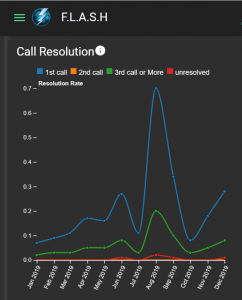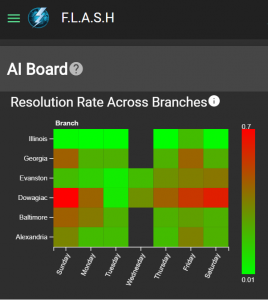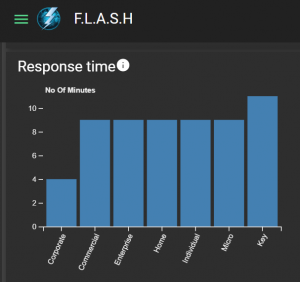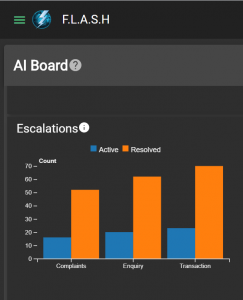geniSIGHTS is proud to announce the launch of FAST(FLASH As Service Tuned)! FAST is an artificial intelligence-powered business intelligence suite designed to help small and medium enterprises perform data analytics through voice-powered dynamic query solving. The tool is an effort from geniSIGHTS to make analytics accessible to entrepreneurs even with a tight budget.
FAST was launched as a virtual event by Lakshmi Narayanan, Emeritus Vice-Chairman, and former CEO of Cognizant. In his address, he pointed out the importance of ease of use and seamless software installation for the rising demand for data-driven tools. Impressed by the new benchmarks established in analytics platforms and the delivery of insights through BI tools with voice commands, he stressed on the user’s demand for independent setup without involvement from support teams which FLASH aims to provide for modern technology-driven organizations.
Check out our feature on TOI: https://timesofindia.indiatimes.com/business/india-business/genisights-startup-launches-ai-powered-business-intelligence-suite-for-small-businesses/articleshow/77238910.cms?utm_source=contentofinterest&utm_medium=text&utm_campaign=cppst Check out our feature on UNI: http://www.uniindia.com/~/covid-19-ai-powered-business-intelligence-suite-launched-for-smes/States/news/2099769.htmlFAST is a focused solution on SMBs that comes as ‘A Do It Yourself kit’ from the FLASH team to jumpstart world-class AI experience in 30 seconds. At this lightning-fast set-up time, the conversational tool FAST provides customizations at the hands of the decision-maker on KPIs, Charts, etc. FAST renders actionable insights and views to the business user. The AI also suggests the type of charts and what level of detail is required for the business user. The users then can further upgrade/downgrade the features according to the AI learnings for the program to tune into the user’s choice. Now that’s the truly world-class platform genISIGHTS has built for small businesses.
FAST gives leaders the ability to analyze business performance with advanced AI capabilities especially during these testing times with the COVID-19 pandemic causing economic and global distress. The setup is seamlessly designed to avoid the need for any external support. It not only visualizes your data but can also render real-time actionable insights from your data with AI-based algorithms. For businesses that need to adopt data-driven strategies in uncertain times, we created FAST as a solution that is the need of the hour.
FAST is built on the geniSIGHTS flagship product ‘FLASH’ which was launched two years ago as an enterprise model and has served many large organizations in the US and India. FAST is a subscription model improved from FLASH, utilizing its advanced analytics algorithms and machine learning ability and simplifying the process of installation. Lalit Kumar, who is among the first users of our product, and heads the statistics department within the quality function in Renault Nissan Technology and Business center India addressed everyone in the launch, communicating how FAST has helped his organization handle data from different sources. It streamlined the data into a dashboard with actionable insights for the management, available at a quick glance.
We were glad to have with us Pat Krishnan, an entrepreneur, and visionary from the Bay Area, with a proven track record of creating value through innovative ideas. He has been a significant part of our journey as a customer, an advisor, and now an active partner for our business expansion for FLASH in the US. Pat in his address appreciated the contribution of the geniSIGHTS team, who helped him conceptualize disruptive business strategies by the use of advanced data analytics. He also shared his strong belief in conversational AI and its contribution to enhancing the customer experience.
Our power team was represented by our Founder and CEO Rajesh Kumar, Co-founder and CAO, Parvathy Sarath, and our Marketing Head, Srividhya M. Rajesh, who was delighted with the amazing response to the launch invite, said that FAST has come at a time when the COVID-19 pandemic has impacted businesses significantly. The thought behind the product was to assist organizations that are looking to save operational costs and use agile insights to drive business decisions. Parvathy, who is the brain behind the success of the project, in her crisp demonstration showed how FAST can be set up in minutes and guide businesses with actionable insights powered by advanced analytics.
FAST features:
-
Cloud-based subscription model
-
30 seconds setup with no additional support required
-
Custom KPIs and metrics
-
Conversational AI for insights at the speed-of-your-thought
-
AI-based actionable insights to adapt to your business
-
Impressive visualization techniques to understand your data
FAST is an AI-driven conversational BI suite designed to make advanced analytics accessible to small and medium enterprises at an affordable price. A dashboard that brings to you analytics at the speed-of-your-thought!
If you missed the web-launch you can click here
Contact us at info@genisights.com or log on to https://flash.genisights.com/ and request a demo today!








